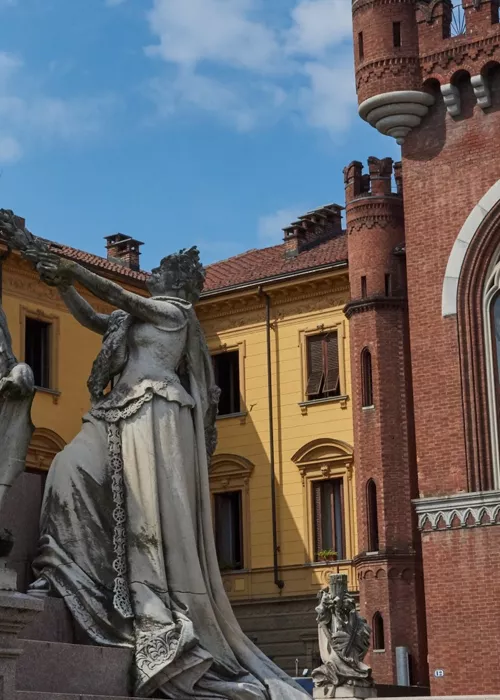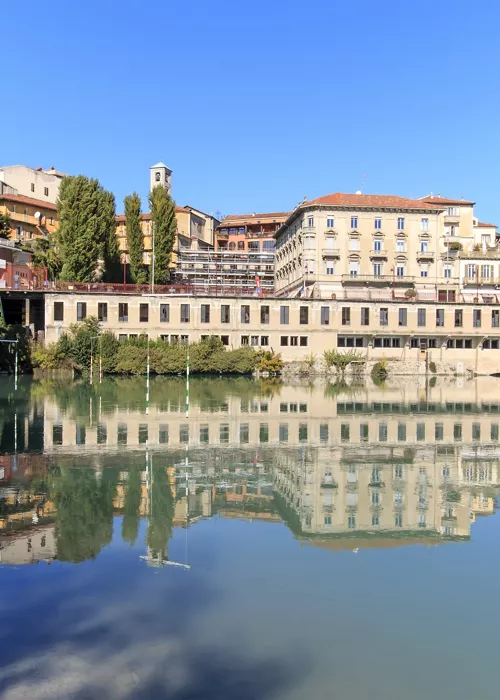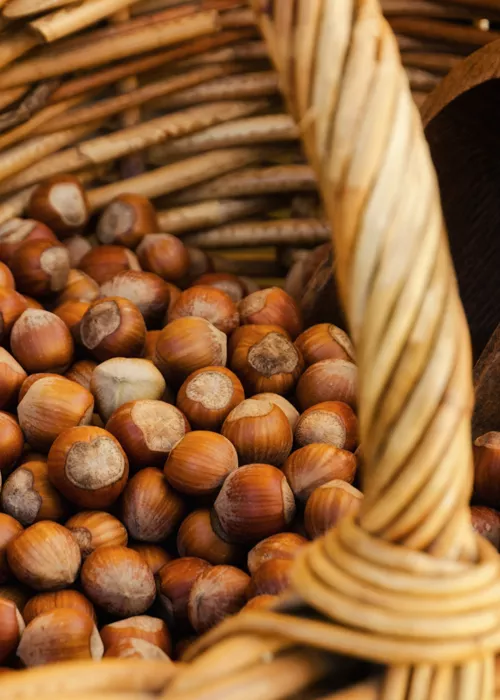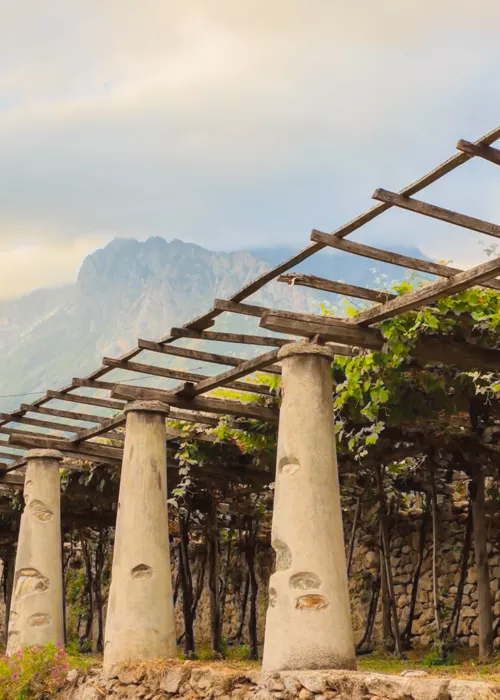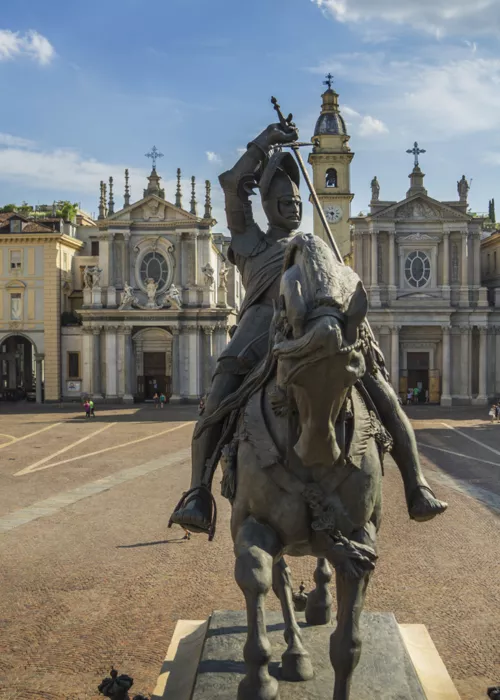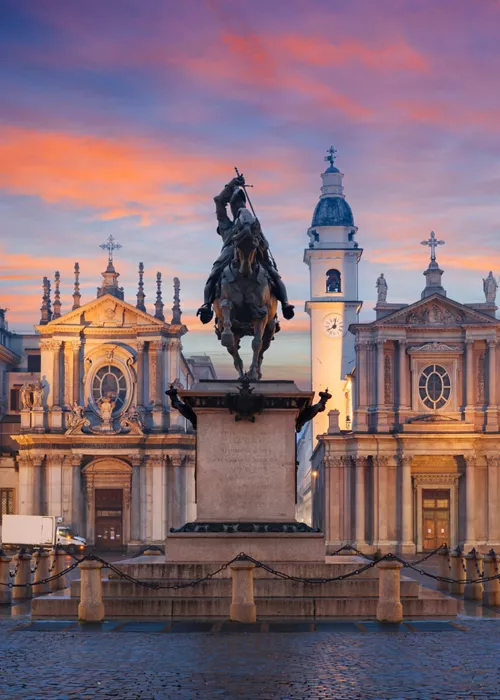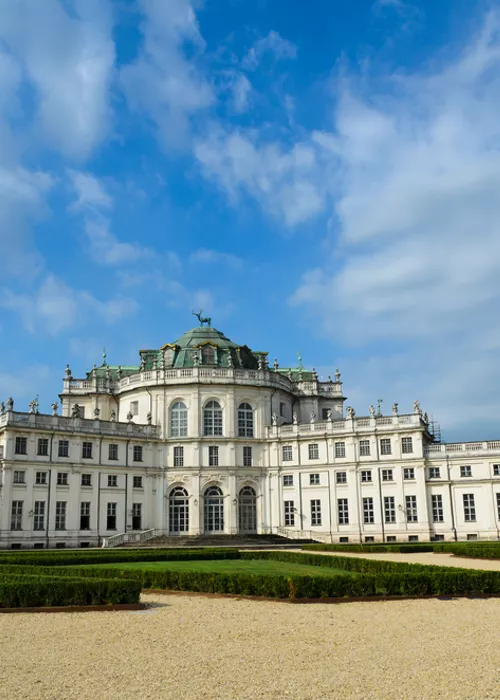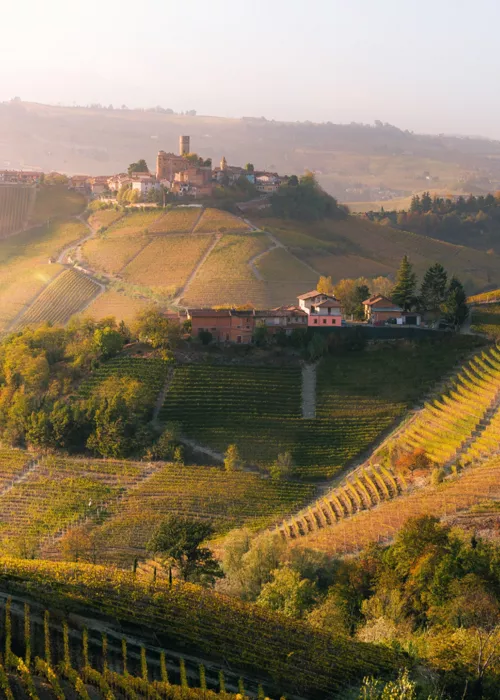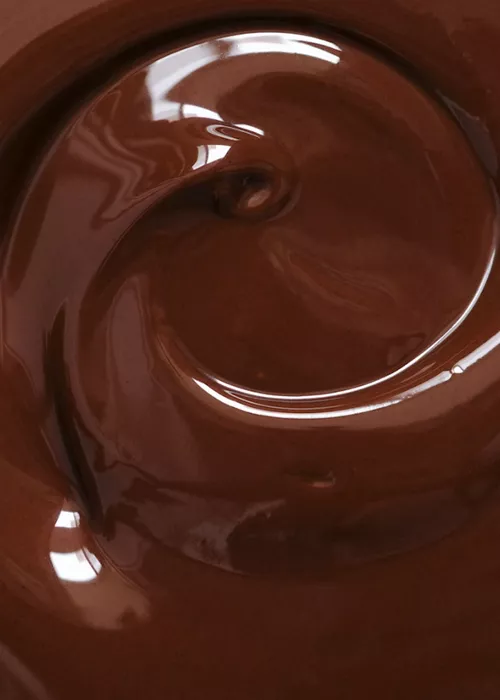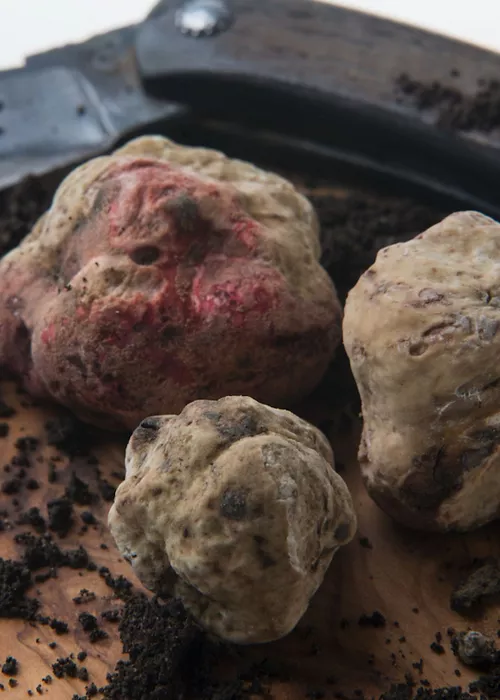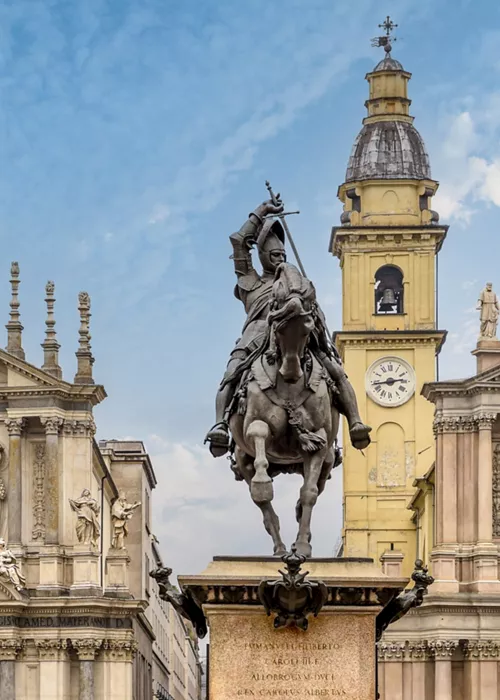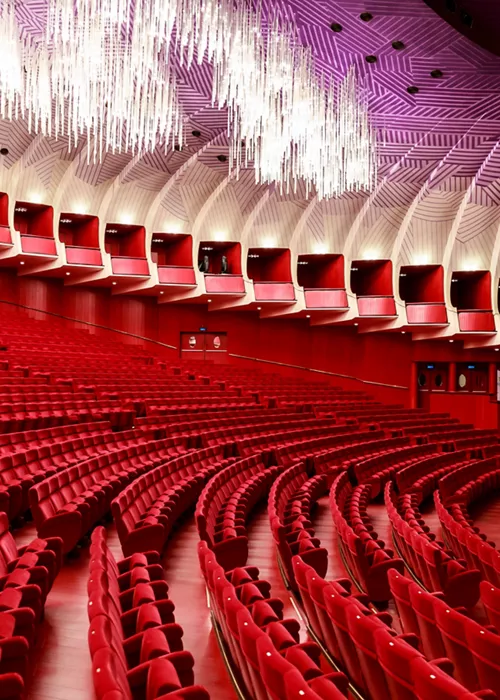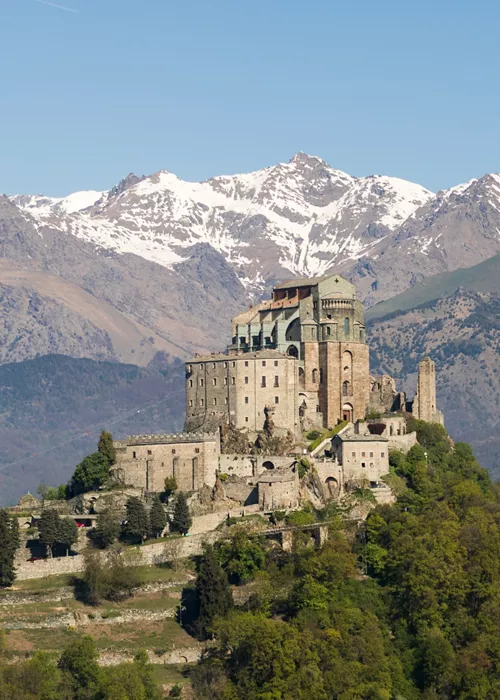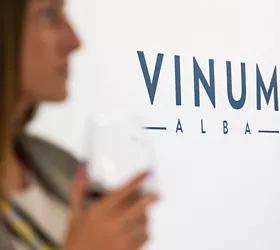Piedmont, an extraordinary laboratory of products, all to be tasted, and to be drunk.
3 minutes

If you know French, you will be able to better understand the Piedmontese cuisine, influenced for centuries by our cousins from across the Alps and neighbouring Ligurians, travellers and traders.
Begin your gastronomic journey with agnolotti and its variations, stuffed according to the area Also try pumpkin gnocchi and chestnuts and Tajarin, thin taglioini with a bright yellow colour due to the presence of numerous egg yolks. Then move on to the bagna cauda, made with anchovies, oil and garlic, where you can dip vegetables such as peppers, cabbage or cardo gobbo di Nizza Monferrato.
A taste of fritto misto with liver is a must, sweetbreads, cervella, veal rump, amaretti, a mouthful ofbrasato al Barolo or Gattinara and another of boiled meat with Bagnet verd (mix of parsley, garlic, salted anchovies, stale bread, vinegar and extra virgin olive oil).
Munching on a breadstick, created here, try Toma and Castelmagno cheeses, as well as salame d’asino and Salsiccia di Bra. Since you're there, enjoy some dishes flavoured with the Alba White Truffle, one of the most prized, and expensive, products of the nation's gastronomy.
Ready now for a shower of sweets? Starting with gianduiotti, first invented in the mid-19th century, with cocoa, sugar and hazelnuts from Piedmont; followed by baci di dama; Krumiri from Casale Monferrato, whose shape resembles a pair of royal moustaches, those of Victor Emmanuel II, whose death happened to coincide with their birth in 1878; lingue di gatto, created in Paris in the 1920s, the Bonet, a typical spoon dessert from the Langhe.And then the Nocciolini di Chivasso, the Meliga pastries, the Tronchetto di Natale, the focaccia di Susa, the amaretti.
For wines produced in Langhe, Roero, Astigiano, Monferrato, Colli Novaresi and Canavese, a Treccani is necessary. We recommend the four most famous reds, Barbera, Nebbiolo, Barolo, Barbaresco.
In the Monferrato, among the hills of Asti
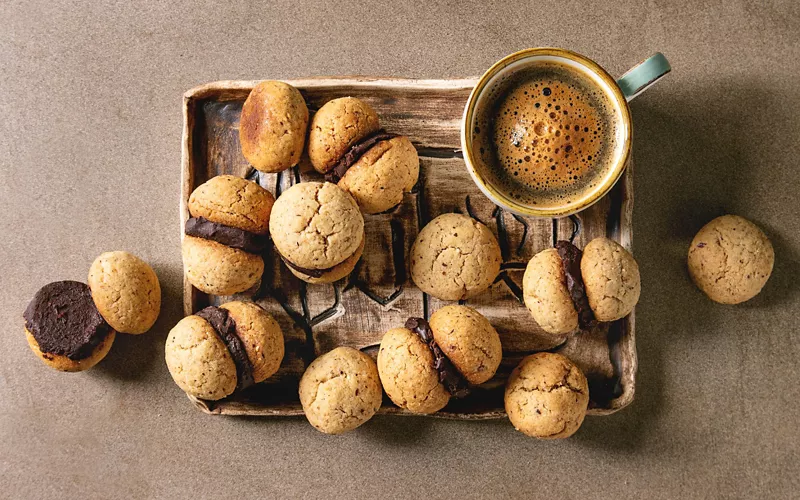
We bring you along a route of important wines, such as Moscato, Grignolino, Barbera, Malvasia, Freisa and other delicious specialities.
Accompanying you are the Grissia monferrina, a hard bread, once eaten spiced with garlic, and the mostarda d'uva (grape mustard) that accompanies meat dishes, prepared with cooked grape must (from Barbera, Dolcetto, Nebbiolo and Moscato) mixed with seasonal fruit.
In Cocconato, known as the Riviera del Monferrato because of its microclimate, enjoy Robiola cheese with a glass of Barbera. In 12 kilometres you are in Albugnano, in the lower Monferrato, which has an excellent wine to match its name, paired with bagna cauda, which is prepared here with wild chilli pepper instead of garlic.
Stop at Castelnuovo Don Bosco to taste Malvasia, a famous dessert wine that enhances the flavour of Finocchini, local biscuits that take their name from the fennel seeds in the dough. Now move south and in 7 kilometres you are in Capriglio, land of the Peperone (pepper), suitable for pickling in vinegar and under raspa (marc).
You then arrive in Asti, the provincial capital, birthplace of great wines such as Moscato d'Asti and Asti, best enjoyed with some typical desserts such as Torta del Palio, covered with melted dark chocolate. In the nearby countryside you will find quality products such as Astigiane Onions and the prized Peperone Quadrato d'Asti (squared pepper from Asti).
End your tour in Castagnole Monferrato, home of Ruchè, a noble wine to pair with medium-aged cheeses such as Robiola d'Alba.
Typical dishes
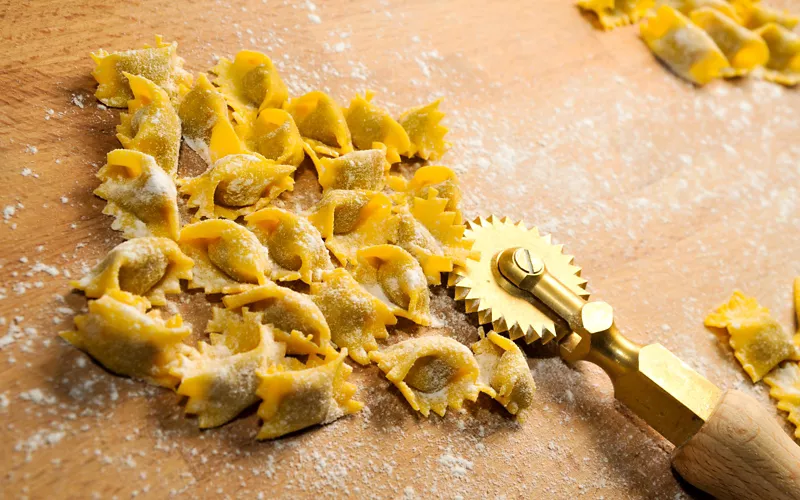
Agnolotti del plin
Seize the aroma of popular Piedmontese cuisine with this pasta that has its origins in the farming tradition where it was customary to use leftovers, in particular meat and roast meats, for the filling. Agnolotto del plin, typical of the Langhe, is smaller than in Turin and also contains vegetables. Plin means 'pizzicotto', the technique used by housewives to fold up the flaps of dough. They are excellent served with meat sauce, but there are also plain versions, served with butter and sage.
Braised beef with Gattinara
A typical dish derived from "brasi" (braised meat in dialect), slow-cooked over a long period of time with spices, vegetables and red wine. Its special feature is the addition of aged Gattinara wine.


